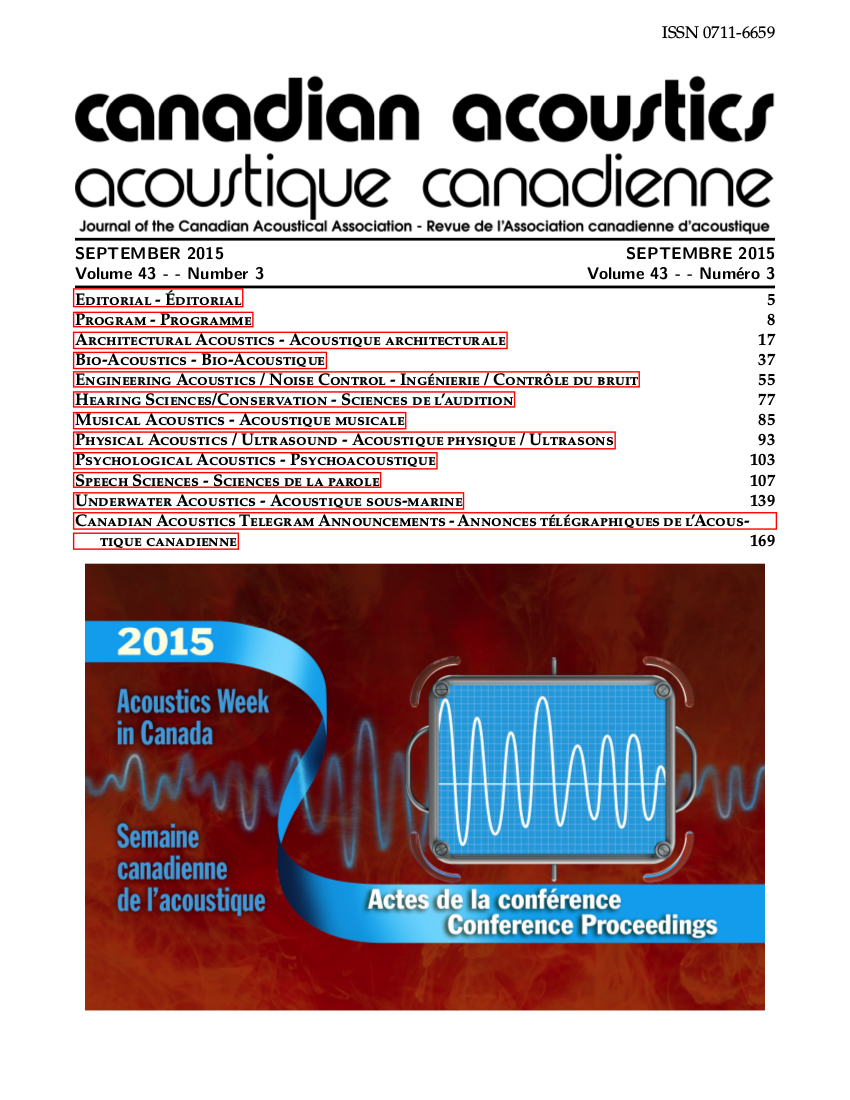HF Sonar Performance in Whitecaps and Wakes
Abstract
A HF sonar performance sea-trial was conducted on the CCGS VECTOR April 8 to 14, 2015 in BC south coast waters. This sea-trial was focused on assessing the limitations to horizontally-oriented HF sonar performance posed by naturally-occurring (e.g. due to white-capping) and ship-wake bubbles. A 90kHz multibeam sonar was operated from the ship against both drifting and towed targets. Forward-looking sonar detection tests were conducted in Sea States from 0 to 5. In low sea-states the drifting targets were routinely observed at ranges up to 550m, but the detection range was significantly reduced under higher sea-states. The aft-looking sonar tests, designed to test target detectability in the ship wake, utilized a towed target at distances from 50m to 500m behind the ship at speeds from 5 to 7knots. Generally the towed target was visible at all ranges except in the close vicinity (<40m) of the stern.Additional Files
Published
How to Cite
Issue
Section
License
Author Licensing Addendum
This Licensing Addendum ("Addendum") is entered into between the undersigned Author(s) and Canadian Acoustics journal published by the Canadian Acoustical Association (hereinafter referred to as the "Publisher"). The Author(s) and the Publisher agree as follows:
-
Retained Rights: The Author(s) retain(s) the following rights:
- The right to reproduce, distribute, and publicly display the Work on the Author's personal website or the website of the Author's institution.
- The right to use the Work in the Author's teaching activities and presentations.
- The right to include the Work in a compilation for the Author's personal use, not for sale.
-
Grant of License: The Author(s) grant(s) to the Publisher a worldwide exclusive license to publish, reproduce, distribute, and display the Work in Canadian Acoustics and any other formats and media deemed appropriate by the Publisher.
-
Attribution: The Publisher agrees to include proper attribution to the Author(s) in all publications and reproductions of the Work.
-
No Conflict: This Addendum is intended to be in harmony with, and not in conflict with, the terms and conditions of the original agreement entered into between the Author(s) and the Publisher.
-
Copyright Clause: Copyright on articles is held by the Author(s). The corresponding Author has the right to grant on behalf of all Authors and does grant on behalf of all Authors, a worldwide exclusive license to the Publisher and its licensees in perpetuity, in all forms, formats, and media (whether known now or created in the future), including but not limited to the rights to publish, reproduce, distribute, display, store, translate, create adaptations, reprints, include within collections, and create summaries, extracts, and/or abstracts of the Contribution.


